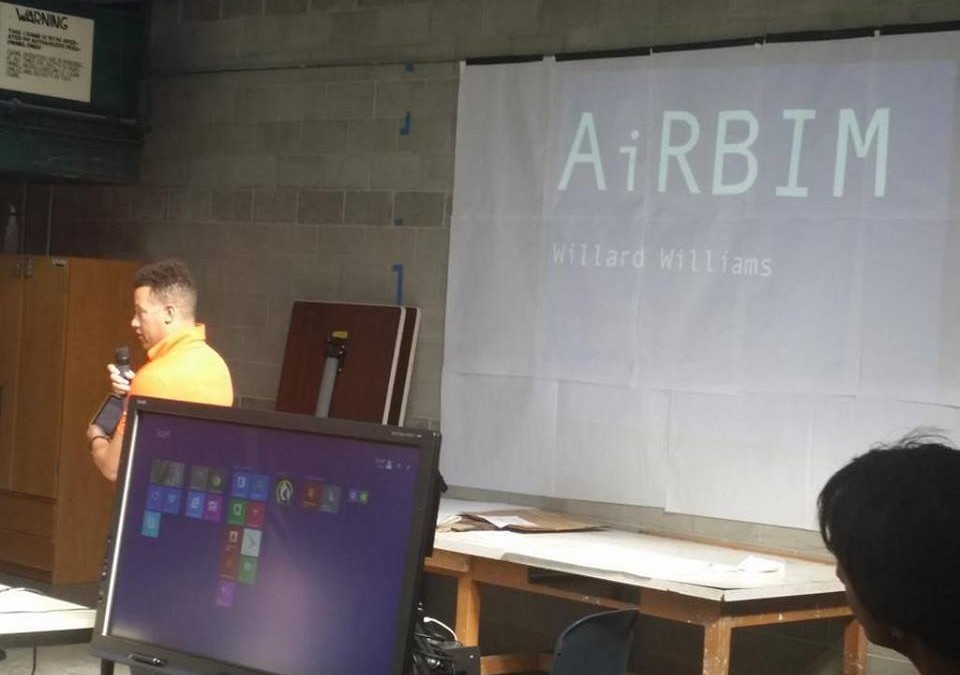by Mary Moscarello Gutierrez | Oct 28, 2014

Professionals in the Architecture, Engineering and Construction fields converged on the University of Washington campus during September to fire up their synapses and hack away at research and development through innovation. So why should we care about this and what does it mean for the industry as a whole?
The event began with the realization that if one were to measure the amount of time and energy that one of the largest industries in the world spends on thinking up new ways to do things the measurement would be far from proportionate. With an eye on remedying this problem, the AEC Hackathon attempts to create an environment where the seeds of innovation can be planted, perhaps birthed for the benefit of all.
During the last Hackathon, participants suggested the use of drones to fly over buildings and capture information. Another idea involved the incorporation of the Facebook-like timeline so that team members on a project could visualize the progress of a project in a collaborative environment, the projects progress and read team members comments which would be stored chronologically.
These are just some of the solutions put forth with an eye focused on bringing technology to the industry in a way that has not been attempted. ArchiCAD user and principal at Ronin Architects, Willard Williams Jr. took part in the Hackathon – his third – our first time covering it. So as the newbie, we asked him to give us his feedback on what was discussed and how he thought it went.
As the event has evolved, so has its method of recognizing the best ideas. Williams said the smallish group that met at the very first Hackathon pretty much shared in the thrill of victory.
“The first Hackathon, everyone won. So of course, I consider myself one of the winners. There were terrific solutions created that year and it made sense to put everyone in first place, since there were only seven teams in all.”
By the second time, things progressed, the size of the event grew and the stakes were higher – so the ideas were even more impressive.”
“We initially wanted to create a BIM Light. Where a robot would project a BIM model on a wall so you could see behind the wall in an X-ray vision of sorts. Because of the challenges of indoor positioning on the fly we had to pivot our idea, thus we created an indoor air quality sensing device. The idea was to augment the sensors data collected by the device. The sensor would capture humidity, temperature, carbon dioxide levels, send the information back to a server augment that information into the room that we were in. We proposed that the sensor data and BIM data would be projected on a mobile device and a facilities manager could visually identify where the building was underperforming or compromised. My team took second place in the Hackathon that year.”
At this most recent Hackathon, Williams went solo for his presentation, though had the help of the SmartUse team and their hardware, the Smart Board.
“My goal was to use ArchiCAD and create a virtual design environment, one that you could edit a project with a Virtual Reality (VR) environment natively – and after talking to the product manager at GRAPHISOFT – it couldn’t be done in 48 hours. Thus I had to pivot from my original idea into something that was achievable within the short time period. My goals were to bring a model into VR that could be viewed as if you were editing it in real time, and to use the BIMx Docs application which is currently only available on IOS and Android devices and make it work on the SmartBoard.”
Using a 55 inch smart board, and VRcade’s virtual reality solution, Williams projected a model via BIMx Docs– which contains all the modeling and 2D information in any project and can be displayed on a smart phone or tablet. He also projected a model via Unity in VRcades VR cave which allowed for an immersive digital design experience.
“I cut a plane into the house at 4 feet and mirrored model on all sides, so the user wearing the VR headset could walk around a model while seeing each elevation projected, at scale, on the corresponding side of the building. The SmartUse team helped me load an Android emulator onto the SmartBoard which allowed me to trick the SmartBoard into thinking that it was a huge Android tablet, thus allowing me to have the same interaction that you would normally enjoy on a huge SmartBoard. One benefit of putting BIMx Docs on the SmartBoard was the ability to create mark-ups or redlines and have a pdf which could be emailed to the team. Another benefit is that you can share your screen with multiple people so that you can collaborate with a number of people in a very interactive way.”
Williams says the next step is to figure out how to get Archicad to work within the VR environment natively or connect Archicad directly with a game engine and create an editing environment and getting rid of the keyboard. True virtual reality creation.
Maybe by the next Hackathon.